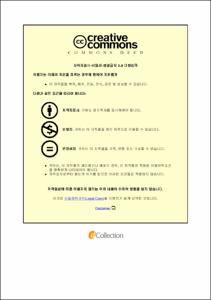Economic Viability of Tilapia (Oreochromis niloticus) Cage Culture in the Lake Azuei, Haiti
- Alternative Title
- 아이티 Azuei 호수에 있어 틸라피아 양식업의 경제성 분석
- Abstract
- Haiti has a great potentiality for aquaculture, nevertheless, no economic information are available to help for a sustainable development of this sector. This study aims to analyze the economic viability of tilapia production in Lake Azuei and figure out the minimal requirement for its success. We collected financial and performance data from a commercial company operating cages in the lake. A bioeconomic model was used for financial performance. Crystal ball application was used to analyze risk regarding to survival rates, feed price and selling price. The baseline model shows a production system with US $ 668 375 annual profit and a high IRR of 33.8 %, the feed cost is the highest production cost: 34.9 % of the total cost and the production cost of US $ 2.574/ Kg. Risk analysis was analyzed with a triangular distribution for survival rate in range from 0.30 to 0.90 with 0.88 as the likeliest value; for market price in a range from US$ 2 to US$ 8 with US $ 6 as the likeliest price; for feed price from a range or US$1 to US$ 3 with US$ 1.16 as the likeliest price; for an combination of survival rate and market price and for a combination of survival rate and food price there is probability to have negative return on the survival rate scenario. The enterprise is not sustainable to change in survival rate and market price. Farmers should improve their skills to maintain high survival rate to gain higher profit. As well, government should realize research and apply policy to stabilize the market price and reduce feed cost to achieve stability for the aquaculture.
- Issued Date
- 2017
- Awarded Date
- 2017. 2
- Type
- Dissertation
- Keyword
- Tilapia Haiti Bio economy Aquaculture 아이티 Azuei
- Publisher
- 부경대학교 글로벌수산대학원
- Affiliation
- 부경대학교 글로벌수산대학원
- Department
- 글로벌수산대학원 국제수산과학협동과정
- Advisor
- 김도훈
- Table Of Contents
- CHAPTER 1. INTRODUCTION 1
CHAPTER 2. AQUACULTURE SECTOR 3
1. History of Aquaculture 3
2. Production 3
3. Government Institution 5
4. Commercial Culture System 6
4.1 Cage Culture 6
4.2 Hill Lake 8
4.3 Pond 8
5. Issue 9
5.1 Imported Feed Increase the Cost 9
5.2 Low Seed Production 9
5.3. Lack of Human Resources 10
5.4 Lack of Equipment and Facilities for Farmers 10
5.5 Post-harvest Constraint 10
5.6 No Coordination between the Actors 11
CHAPTER 3. MATERIALS AND METHODS 12
1. Description of Tilapia 12
1.1 Generality 12
1.2 Economic Interest 12
2. Description of the Company 13
3. Bioeconomic Model of Tilapia Aquaculture 16
4. Analytical Methodology 17
4.1 Biological Sub-Model 17
4.2. Technical Management 18
4.3. Economic Sub-Model 18
4.4. Financial Analysis 19
4.5. Analytical Data 20
4.5.1 Performance Data 22
4.5.2 Seed Cost 22
4.5.3 Other Input 23
4.5.4 Labour Cost 23
4.5.5 Initial Investment 24
CHAPTER 4. RESULTS 26
1. Baseline Model 26
1.1. Breakeven Selling Price 26
1.2. Breakeven Total Production 27
1.3. Breakeven Survival Rate 28
1.4. Breakeven feed price 29
2. Sensitivity Analysis 30
2.1 Survival Rates Scenario 30
2.2 Feed Price Scenario 33
2.3 Selling Price Scenario 35
2.4 Combining Selling Price and Survival Rate 37
2.5 Combining Survival Rate and Feed Cost 39
CHAPTER 5. DISCUSSION 41
CHAPTER 6. CONCLUSION 45
ACKNOWLEDGEMENT 47
REFERENCES 48
- Degree
- Master
- Appears in Collections:
- 글로벌수산대학원 > 국제수산과학협동과정
- Files in This Item:
-
-
Download
 Economic Viability of Tilapia (Oreochromis niloticus) Cage Culture in the Lake Azuei, Haiti.pdf
기타 데이터 / 1.74 MB / Adobe PDF
Economic Viability of Tilapia (Oreochromis niloticus) Cage Culture in the Lake Azuei, Haiti.pdf
기타 데이터 / 1.74 MB / Adobe PDF
-
Items in Repository are protected by copyright, with all rights reserved, unless otherwise indicated.